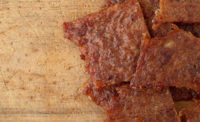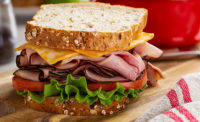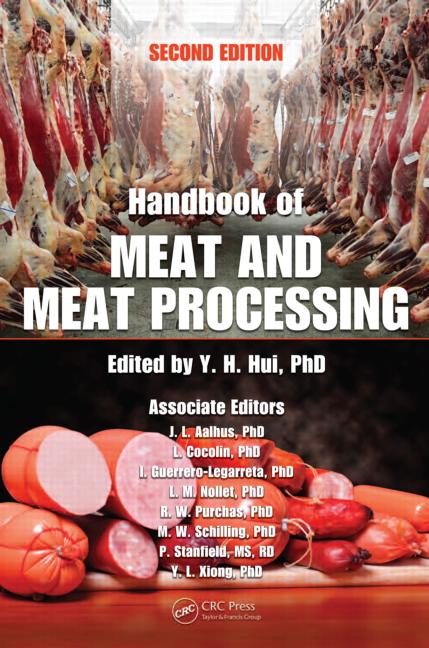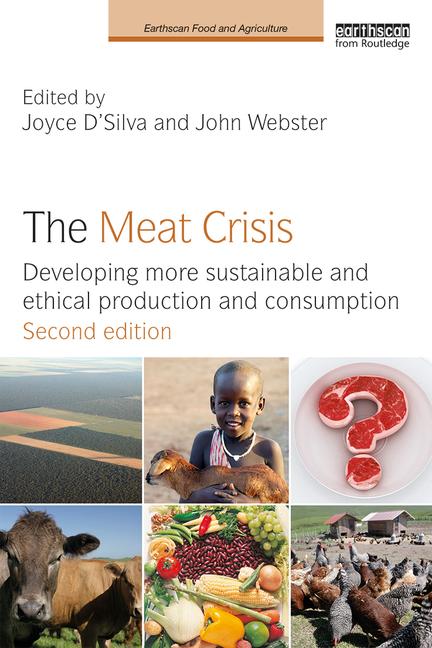When it comes to meat and poultry, big is not necessarily better.
The greater use of antibiotics and growth hormones on animals and longer periods in feed lots result in bigger carcasses — and subsequently larger slices of whole-muscle cuts.
Yet, while the super-size cattle, hogs and poultry typically generate greater revenues for producers, they also can trigger unintended processing and merchandising consequences. Such ramifications include plant inefficiencies because of inadequate equipment and the possible sale of cuts with substandard flavor and coloring.
“With modern technologies and diverse herd management, cattle are getting larger every day, and subprimals are becoming larger and more difficult to merchandise,” reports the Centennial, Colo.-based National Cattlemen’s Beef Association (NCBA). “These factors are creating new challenges for meat cutters and merchandisers.”
With little pressures on ranchers to limit the size of the animals, the meat and poultry sector will likely have to adjust to the new dynamics.
“The situation is not going away,” says Kari Underly, principal of Range Inc., a Chicago-based meat marketing, training and education firm. “While many cattle are in lots for 14 to 18 months, others can go 30 months or longer, which impacts size. We’re also keeping cattle healthier, which leads to weight gains.”
A quest for product consistency
Larger carcasses are making it more difficult for processors to develop products with consistent quality and fat levels, and often require them to slice cuts thinner to meet consumers’ demands for smaller-size proteins.
Such cutting, however, can lead to poorer eating experiences because of the greater possibility of shoppers overcooking the meats, Underly notes.
“Beef is 72 percent water and overcooking can cause the liquid to evaporate, resulting in a tougher product with lower quality,” she states. “There is less chance of overcooking larger and thicker proteins.”
Newer cutting techniques, meanwhile, also enable sellers to offer cuts with greater merchandising appeal, Underly adds.
The NCBA’s Beef Alternative Merchandising (BAM) program, for instance, is suggesting methods for fabricating ribeyes, top loins and top sirloins to create 4- to 8-ounce steak and filet sizes and 1.5- to 2.5-pound petite roasts.
Other BAM options are intended to enable the production of ready-to-cook cuts that do not require trimming, and lean beef selections in healthy portion sizes.
“Many consumers want a healthier and smaller piece of meat,” Underly says. “They are not looking for 24-ounce beef ribeye steaks. The use of such cutting techniques will help keep shoppers in the category.”
Adding to the whole-muscle processing challenge is the need for many operators to source meats from a variety of suppliers to meet inventory requirements.
It often results in an array of cuts that differ in weight, size and quality. The varying levels of fat, meanwhile, makes it more difficult for processors to anticipate and manage yield loss, says Zack Levenson, chief operating officer at Golden West Food Group Inc., a Vernon, Calif.-based processor of fresh and frozen value-added proteins.
“One packer’s products may not have the same trim level as that of another packer,” he says. “It is important to enhance yield because every percentage of yield loss in meats results in more money going into the garbage.”
There often is a 5 percent to 10 percent difference in yields from carcasses coming from different packers, Levenson says, adding it is important that processors ensure they are paying less for lower quality proteins with lower yields.
Yet, cuts with higher fat levels are still sometimes preferable for retailers looking to meet shopper demands for lower-cost selections.
“It hurts to go against what the retailer and consumer expect,” he notes. “Product consistency also remains a selling point and dealing with it is not getting easier.”
Animal comfort is a key
A failure by some processors to modify operations to smoothly handle larger cattle is further affecting the quality of whole-muscle cuts.
Chutes that are too small to comfortably accommodate animals during the slaughter process, for instance, result in more stress to the cattle, Underly says. Such agitation can cause blood specks to appear in the muscle tissue and negatively impact product appearance.
Consumers, she says, often do not see the discolorations until they are preparing a meal.
“Many plants, particularly smaller outfits, may not have the capital to update their chutes to contain bigger animals,” she says. “It results in products that are unappealing to shoppers and harder for retailers to sell.”
In addition to food quality issues, larger carcasses also contribute to processing inefficiencies in protein plants, says Jeff Sindelar, associate professor and extension meat specialist at the University of Wisconsin in Madison.
“Bigger pieces are going through equipment and are in smokehouses that were not designed to handle the larger sizes,” he says. “The greater mass is requiring producers to adjust their processes.”
Operational revisions can include implementing longer tumbling cycles to get better brine distribution throughout a cut, he says.
“Processors need to leverage the machinery and methods that can provide optimal performance when handling bigger pieces of meat,” Sindelar says. “It should be part of the goal for uniform product quality.”
It is pivotal to leverage the technologies and techniques that best support the development of specific cuts, he notes.
“There are challenges on the back end when handling products and raw materials which are not the ideal size for the equipment,” Sindelar says. “The machines will often not operate properly. The solution is to adapt.”
No end in sight
Raising larger animals, meanwhile, is set to continue as the carcasses generate healthy revenues for producers and remain acceptable to most protein processors.
“Packers are not discounting heavy carcasses at a rate that would discourage production,” says Josh White, NCBA executive director of producer education. “The industry also is becoming more efficient in developing larger animals, including those that provide meat with less external fat while keeping the marbling.”
Indeed, he says cattle developers also are more effectively meeting the yield and grade targets of packer customers.
Helping to support such efforts is the use of genetic monitoring equipment, including ultrasound technology that measures carcass quality in live animals, including the level of marbling, White says.
Yet, while protein carcasses and whole-muscle cuts are becoming larger, there are exceptions to the trend.
The greater shopper interest in natural and organic proteins, for instance, is leading to raising more animals without the use of antibiotics or growth hormones, which limits the size of the cuts.
The natural and organic meat and poultry categories continue to grow in household penetration, dollar and pound sales, according to the 2016 Power of Meat report.
Thirty-eight percent of all packages in meat cases in 2015 were natural products, up from 32 percent in 2010, 29 percent in 2007 and 22 percent in 2004, the report notes. In addition, 3.8 percent of the packages were organic, an increase from 0.9 percent in 2010.
Altogether, 86 percent of shoppers say they are very or somewhat interested in antibiotic-free meat and poultry, and 68 percent note they are very or somewhat interested in organic items.
The top reasons for purchasing natural or organic cuts is the perceived shortcut to the “free-from” substances that shoppers wish to avoid; interest in supporting the better treatment of animals; and a perception of positive long-term health benefits, the reports states.
Lower costs are a catalyst
Helping to spur future increases in natural and organic activity, meanwhile, will diminish price differentials with conventional proteins, the report adds. It notes 28 percent of shoppers indicate they expect to purchase more natural and organic cuts, and 66 percent state they expect to buy about the same amount going forward.
“Following a brief plateau during the height of the recession, household penetration for combined natural and organic meat and poultry is on a six-year growth and reached 40 percent in 2016,” the report states. “Natural and organic offerings are becoming more ubiquitous.”
The 2016 Power of Meat report includes data from a November 2015 national online survey of 1,360 consumers who mirror the U.S. population. It is published by the Alexandria, Va.-based Food Marketing Institute and the Washington, D.C.-based North American Meat Institute.
In addition to the array of natural and organic proteins, large whole-muscle cuts also are set to remain prominent in meat cases.
“The larger carcasses are here to stay,” Sindelar says. “With a growing population, you have to produce food more efficiently and have more of it. One way to adapt is to have faster growing and larger animals to meet those needs.”
Along with the larger cuts, meanwhile, will be improvements to meat quality, the NCBA states, noting “the industry has made strides in selection and management, especially at the feed yard.”
“We have developed lines of cattle and continue to propagate lines of cattle that will do a better job of putting on less external fat while maintaining the marbling of meat that folks want in their steaks,” White says. “Our genetics have become more uniform and are producing higher quality meats.” NP











